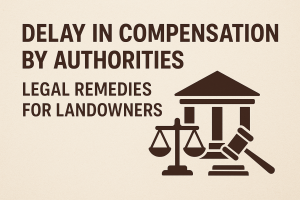The Consumer Protection Act, 2019 is a cornerstone of consumer rights in India, providing mechanisms for individuals to seek redress against unfair practices and faulty goods or services. This legislation replaced the earlier Consumer Protection Act of 1986, modernizing the framework to account for e-commerce, digital transactions, and evolving consumer needs. Here’s a breakdown of key consumer rights under this act and how it empowers individuals.
- Right to Information

The Consumer Protection Act grants consumers the right to full and accurate information regarding products or services, including price, ingredients, safety instructions, and shelf life. This right allows consumers to make informed decisions and protects them from misleading advertisements and false claims.
- Right to Safety
Consumers are entitled to safe products that won’t cause harm or injury when used as intended. This right is especially important for items such as food, medicines, and electronics. If a product is found to be unsafe or substandard, consumers have the legal backing to seek compensation for injuries, and manufacturers can face penalties.
- Right to Choose
The right to choose allows consumers freedom in purchasing from a variety of competitive products and services without coercion. This is especially relevant in monopolistic or restrictive markets where choice may be limited. By fostering competition, the act promotes better quality and fair pricing, ensuring that consumers are not pressured or forced into specific purchases.
- Right to Seek Redressal
One of the most empowering aspects of the Consumer Protection Act is the right to seek redressal. It enables consumers to file complaints against unfair trade practices, defective products, or poor services. The act provides for quick dispute resolution and protects consumers against harassment, intimidation, and deceit. Consumers can file complaints in consumer courts, which operate at district, state, and national levels.
Key highlights of the grievance redressal mechanism include:
- E-Filing of Complaints: Consumers can now file complaints electronically, streamlining the process and making it accessible for all.
- Consumer Dispute Redressal Commissions (CDRCs): These specialized courts handle disputes at three levels:
- District CDRCs: Handling claims up to INR 1 crore.
- State CDRCs: Handling claims from INR 1 crore to INR 10 crore.
- National CDRC: Handling claims above INR 10 crore.
- Right to Be Heard
The act provides consumers with the right to be heard, ensuring that their grievances are fairly reviewed and acted upon. Consumers can voice their concerns through established forums or even seek the government’s intervention if necessary. This right also mandates companies to provide accessible customer service channels where consumers can report issues.
- Right to Consumer Education
The act emphasizes the need for consumer education, especially as new technology and products enter the market. Consumer education initiatives inform individuals about their rights, product standards, and safety practices. The National Consumer Helpline and government campaigns are examples of efforts aimed at educating consumers about making safer, more informed choices.
- E-Commerce and Digital Transactions
The 2019 act includes specific provisions to protect consumers in the growing e-commerce sector. Key areas of protection include:

- Accountability of Online Platforms: E-commerce platforms are required to display seller information, return and refund policies, and provide transparent dispute resolution processes.
- Protection Against Fake Reviews: The act mandates that online reviews be verified and genuine, allowing consumers to make informed decisions based on accurate feedback.
- Product Liability: Both manufacturers and sellers can be held accountable if a product is found defective, or if injuries arise due to misinformation or lack of safety warnings.
Conclusion: Empowering Consumers in a Dynamic Market
The Consumer Protection Act, 2019 has empowered consumers with a robust framework to exercise their rights confidently. This law not only addresses traditional consumer grievances but also adapts to new-age challenges in e-commerce and digital transactions. Through a focus on education, access to justice, and greater accountability, the act encourages a fair, transparent marketplace where consumers can make informed decisions and safeguard their interests.



